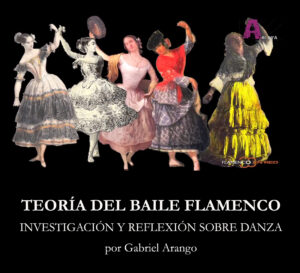XII Edición Flamenco en Red – TEORÍA DEL BAILE FLAMENCO. INVESTIGACIÓN Y REFLEXIÓN SOBRE DANZA

Gabriel Arango, (Máster en investigación y análisis del flamenco (UGR), Licenciado en danzas (UNA), gestor cultural (UNC), bailarín, coreógrafo e investigador), realizó una actualización de la historia y un repaso sobre los escritos, pinturas y artículos de periódicos con relación al baile flamenco y la danza española.
Elaboró una aproximación teórica a una posible construcción estética de la danza estructurada en estos cinco vídeos.
- Romanticismo, bolero y flamenco
Accede al vídeo aquí
- Academias, bailes de jaleo y café cantante
Accede al vídeo aquí
- De los ballets rusos al concurso de Granada (entre el cuplé y las vanguardias)
Accede al vídeo aquí
- Guerra civil, exilio y sección femenina (la normalización de los cuerpos y libros de danza
Accede al vídeo aquí
- Flamenco: masculino y gitano (Vicente Escudero, Antonio Ruiz, Antonio Gades y Mario Maya)
Accede al vídeo aquí
- De los cuerpos híbridos al mercado del baile (Nuevo flamenco, performance y pureza)
Accede al vídeo aquí

